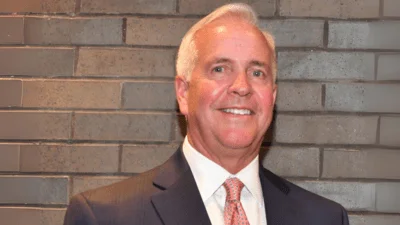ComEd Multi-Year Plans Advance Region’s Economic, Climate and Equity Goals | bolingbrookchamber.org
ComEd Multi-Year Plans Advance Region’s Economic, Climate and Equity Goals | bolingbrookchamber.org
ComEd Multi-Year Plans Advance Region’s Economic, Climate and Equity Goals
ComEd today filed with the Illinois Commerce Commission (ICC) multi-year grid and rate plans ("the plans") that will strengthen the region's infrastructure and economy and increase access to the benefits of clean energy and decarbonization under the state's Climate and Equitable Jobs Act (CEJA). The plans also ensure that the electric grid remains reliable and resilient for the 9 million people ComEd serves in northern Illinois as severe weather events become more common due to climate change.
"ComEd has a critical role in ensuring the transition to cleaner energy is reliable and equitable for all," said ComEd CEO Gil Quiniones. "These proposed investments are necessary to deliver the resilient 24/7 power our customers depend on, prepare the grid for fleets of electric vehicles and electrification, integrate more clean energy and battery storage, and equitably advance a decarbonized energy future. In addition to supporting the goals of CEJA, the plans will create good-paying local jobs and drive investment to help ensure all communities – especially those that are under-resourced – benefit from the clean energy transition."
The grid plan reflects input provided in 15 ICC-led workshops, which involved hundreds of participants and dozens of presentations on energy issues and community and stakeholder priorities. Following an 11-month open process in which the ICC, other public agencies, and consumer, environmental and other groups will review the plan and costs, the ICC will issue a decision in December 2023. State regulators must find all costs prudent and reasonable before including them in rates.
Multi-Year Plan Advantages
ComEd's rate plan sets base rates and revenue requirements for four years, which provides greater predictability for customers while funding investments that are required to deliver at least 40 percent of benefits to equity investment-eligible communities. The plans align with ComEd 2030, the company's recently announced vision for a carbon-free energy future that will benefit all communities and meet customers' changing needs for the rest of this decade and beyond.
Each investment that ComEd plans helps ensure the safety, resiliency and security of the grid while meeting the demands of climate change, decarbonization and electrification, evolving customer needs, and increasing cyber and physical security threats – all with a focus on equity and affordability. Key areas of investment include:
- Improving service reliability and storm response: Upgrade and replace poor-performing or obsolete cable, wood poles and other equipment; trim or remove trees near power lines; and deploy advanced analytics that help prevent power outages and improve restoration of service to customers.
- Supporting the clean energy transition: Enable safe and effective electrification of vehicles, homes and industry through necessary upgrades to power lines and substations to meet increased electric demand and invest in technology needed to integrate large of amounts of clean energy securely, safely and efficiently.
- Improving coordination with communities: Enhance community resilience to storms and resource management for storm restoration.
- Ensuring all communities can access and benefit from clean energy: Expand programs to prepare local residents for good-paying clean energy jobs and use the advanced communication network to close the digital divide in under-resourced communities.
ComEd's average total monthly customer bill of $93 is among the lowest in the nation today, and its residential customers' bills are approximately 20 percent lower than the average in the 10 largest U.S. metropolitan areas. ComEd's plans would result in an increase of about $4.25 in the average monthly residential bill annually from 2024 through 2027, for a total impact of $17 by 2027. At ComEd's requested rate for 2027, the average residential bill would be less than even the average 2021 residential utility bill in more than half of U.S. states. The plans include an increase in annual delivery costs of $1.47 billion spread out over four years. The company is seeking ICC approval to defer 35 percent of the 2024 increase until 2026 to smooth the transition for ComEd customers.
Maintaining a highly reliable grid with fewer and shorter power outages will continue to create savings for customers. ComEd's reliability is among the best of all large U.S. electric companies and was better in 2022 than in any prior year on record. Since ComEd started smart grid improvements in 2012, it has improved overall reliability by more than 80 percent, helping customers avoid more than 19 million outages and save more than $3.3 billion in outage-related costs. As extreme weather events, electrification and other ComEd customer needs increase, the need to invest in the reliability of the system grows.
"We are encouraged that ComEd's plans will build greater resilience, improve the capacity to transition to clean energy and adapt to climate change impacts. We are pleased to support ComEd's multi-year grid plan," Neil C. James, Executive Director of Metropolitan Mayors Caucus.
Expansion of Renewables and Beneficial Electrification
ComEd estimates that solar power on its grid, including rooftop and community solar systems, will grow more than five times from almost 500 megawatts (MWs) today to 2,700 MWs by 2030. In 2022, ComEd received a record-setting 19,292 applications from residential, commercial and industrial customers to connect solar panels and other distributed energy resources to ComEd's grid, a 74 percent increase from the prior year. Sustaining this growth and preparing to serve more electric vehicles, buildings and industries while maintaining grid safety and reliability for ComEd customers will require physical and digital infrastructure upgrades.
"EV adoption has grown significantly throughout the country, and specifically in Illinois, in recent years, and we expect this trend to accelerate in the near term," said Matthew Deal, manager of utility policy at ChargePoint, the largest online network of independently owned EV charging stations. "ComEd's proposed Grid Plan establishes a strong foundation to support the State's goal for one million EVs on Illinois roads by 2030."
Multi-Year Plans Support Jobs, Drive Economic Development
ComEd's plan will support job creation as renewable energy rapidly expands and various sectors decarbonize. National economic and workforce applied research firm BW Research recently released a first-of-its-kind study that found that the state's larger transition to clean energy could create a net increase of more than 41,000 jobs by 2030 and 150,000 jobs by 2050 in Illinois.
"Illinois leads the nation in moving to a clean energy economy built by union labor," said Joe Duffy, executive director of labor coalition Climate Jobs Illinois. "ComEd's Grid Plan represents an important first step towards the clean jobs future."
In addition, the grid plan advances ComEd's leading role in supporting economic growth across northern Illinois. Companies continue to invest in the region thanks to the unparalleled access to clean, cost-effective and highly reliable power. As one key example, in the last two years, ComEd has brought 28 commercial projects online, including 12 data centers, representing 6,800 jobs and more than $3 billion in local investment.
"As businesses continue to increase their electrification needs, an affordable, reliable, and clean grid has never been more critical," said Jack Lavin, President and CEO of the Chicagoland Chamber of Commerce. "ComEd's continued investments in a more sustainable system will keep Illinois competitive by providing a modernized grid that can attract businesses to our state and contribute to their performance."
Performance Metrics Drive Accountability in Achieving Targets and Equity
ComEd's plan is subject to ICC-approved performance metrics that set targets for grid performance and equity. They measure: continued improvement in reliability of the overall grid and greater resilience in environmental justice communities; reduction of peak electric demand on the grid; reduction of residential customer disconnections; reduction of the time it takes to connect distributed energy resources; and enhancement of service through the resolution of customer issues.
Metrics include ComEd's spend with diverse suppliers and its impact on the economy. In 2021, ComEd spent $893 million – 42 percent of its total spend – with minority-owned, women-owned, and veteran-owned companies, up from $253 million in 2012. ComEd works with more than 660 diversity-certified suppliers, including The Will Group, a contract manufacturing company.
"Over the past 10 years, we have partnered with ComEd on various projects that have transformed communities like the K-Town Business Center in North Lawndale," said Joshua Davis, president of The Will Group. "ComEd's proposed grid plan is a community investment that aligns with our partnership's foundational shared quality of being transformative in the communities in which we operate, and we fully support it."
To continue to support customers who are working to make ends meet, ComEd recently added three new customer-assistance programs to its existing offerings to help income-eligible families and individuals access assistance options and manage their electric bills.
Original source can be found here





 Alerts Sign-up
Alerts Sign-up